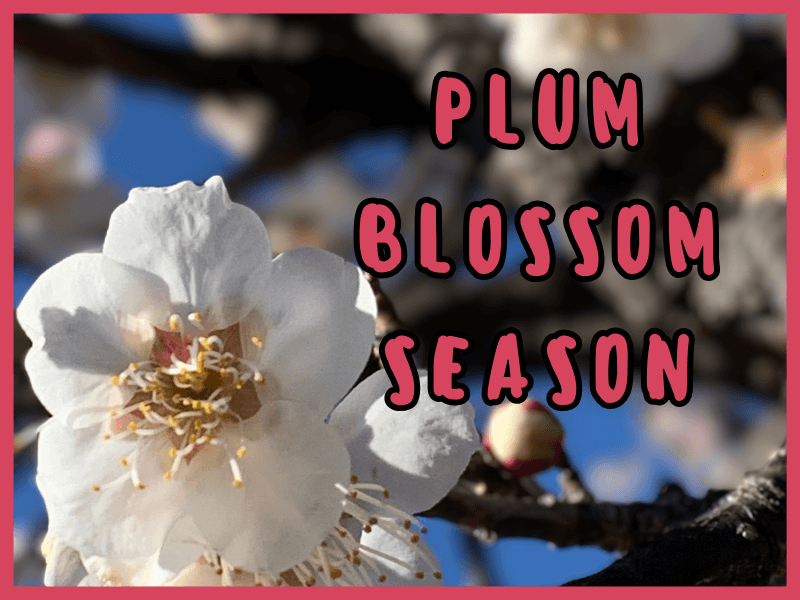| Back to Back Issues Page |
 |
|
Natto Talk, Issue #6 -- The Natto Journey - A Japanese Valentine's Day February 22, 2024 |
The Natto Journey Continues!Welcome to the sixth issue of "Natto Talk!" I'm thrilled to continue on this journey with you and explore the fascinating world of fermented soybeans together. If you like Natto Talk, please do a friend and me a big favor and "pay it forward."
If a friend did forward this to you and if you like what you read, please join our Simply Natto "Foodie" community by visiting...
natto-talk.html
February 2024, Natto Talk - Issue #6In this sixth edition, you will learn about:
1. A Japanese Valentine's Day 2. A Plum Blossom Festival 3. A dried salted plum & natto udon recipe
4. This month's Japanese word from Simply Natto's "Natto Lingo"
A Japanese Valentine's Day
Valentine's Day, a celebration of love and affection, is widely embraced around the world. In Japan, however, the tradition takes on a unique and culturally distinct flavor.
Unlike in many Western countries where both partners exchange gifts, in Japan, the focus is primarily on women expressing their feelings through the art of gift-giving.
Women Take the InitiativeOne of the distinctive features of Valentine's Day in Japan is the role reversal in gift-giving. Traditionally, it is women who present gifts, usually in the form of chocolates, to the men in their lives.
This includes not only romantic partners but also male colleagues, friends, and family members.
Types of Chocolates
The type of chocolate given holds significance in Japanese Valentine's Day customs. There are various types of chocolate given out and it can sometimes get a bit confusing. The two more popular types are called "honmei-choco" (pronounced: hone-may-cho-co) and "giri-choco" (pronounced: gey-ree-cho-co, say "key" with a "g" and slightly roll the "r" in "ree"). Honmei-choco is the special, heartfelt chocolate given to a loved one, often accompanied by a confession of love.
Handmade ChocolatesMany Japanese women put great effort into making handmade chocolates, adding a personal touch to their gifts. This act of crafting chocolates is seen as a sincere expression of affection and dedication. The time and care invested in creating these treats make them more meaningful. On the other hand, giri-choco is the obligatory chocolate given to friends, colleagues, or acquaintances as a gesture of friendship. Giri-choco has started to become less popular over the years, partly due to the giver and the receiver being left with the unwanted feeling of obligation.
As many of my students have told me, "tomo-choco" (pronounced: "tow-moe-cho-co"), and comes from the Japanese word for friend (tomodachi), seems to be more popular these days.
Other types being given"gohobi-choco" (pronounced: go-hoe-bee-cho-co) - "Job Well Done" chocolate "fami-choco" (pronounced: fah-me-cho-co) - chocolate received by a family member "jibun-choco" (pronounced: jee-boon-cho-co) - chocolate given to yourself
"oshi-choco" (pronounced: oh-she-cho-co) - chocolate given by fans (e.g. music group fans, celebrity fans, etc.)
Evolution of CelebrationsOver the years, the celebration of Valentine's Day has evolved, and some couples now choose to celebrate in a more mutual and Westernized way. However, the unique Japanese customs of women initiating the gift-giving and the distinction between honmei-choco and giri-choco continue to be deeply ingrained in the culture.
Stay tuned for the March issue of Natto Talk, where you'll learn more about when and how these delicious Valentine's Day gifts are reciprocated.
A Plum Blossom Festival
As winter fades away, signaling the arrival of spring, Japan comes alive with vibrant colors and celebrations. One such enchanting event is the Plum Blossom Festival held in Mito, Ibaraki. Renowned for its breathtaking scenery and cultural significance, the festival offers a delightful experience for locals and visitors alike.
Introduction to Mito's Plum Blossom Festival:
Mito, a city in Ibaraki Prefecture, is home to one of Japan's most celebrated Plum Blossom Festivals. The event typically takes place from late February to early March when the plum trees are in full bloom, transforming parks and gardens into a sea of delicate pink and white blossoms.
**You can read more about the Mito Plum Blossom Festival by clicking on the link below.
mito-plum-blossom-festival.html
February Recipe: Natto Umeboshi UdonFor this month's recipe idea I recommend natto umeboshi udon. Udon noodles are made out of wheat flour, and they are thick and white in color. These noodles are soft and chewy, and pair nicely with fermented soybeans. Chop up an umeboshi (dried salty plum) and add it to the natto (*umeboshi is salty and sour - add to your liking).
This dish is best enjoyed with cold udon during the warmer months.
How To Make
Want more natto and noodle recipe ideas?
You can discover more ways to enjoy your natto with noodles by clicking on the following link:
natto-dish-with-noodles.html
Simply Natto's Language CornerThis month's Japanese word is: 梅干し (umeboshi) "oo-may-boh-she"
meaning: dried salted plum
What to do Next?Comments? Ideas? Feedback? What did you think of the baked sweet potato and natto combination? Did the flavors suit your tastes? I'd love to hear from you. Just reply to this publication, or leave a comment on the videos, and tell me what you think! To all of my fellow "Natto Foodies," thank you for joining me on this natto-filled adventure, and I look forward to sharing and discussing more natto goodness with you in our next issue of Natto Talk.
Until next time!
Justin
|
| Back to Back Issues Page |



